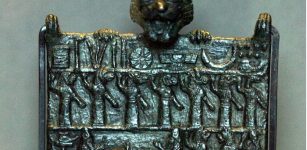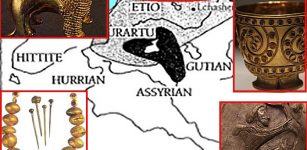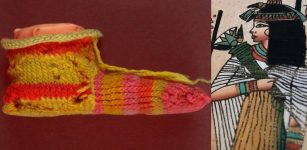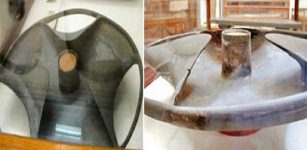Medieval Irish Book Fitting Among Historical Finds Unearthed In Old Cemetery In Norway
AncientPages.com - A decorative fitting from a book, originally from Ireland, has been unearthed during the expansion of Byneset Cemetery, nearby to the medieval Steine Church, built in the 1140s in Trondheim in mid-Norway.
The find is probably a gold-plated, silver fitting from a book. It appears to be Celtic in origin, and might have come from a religious book brought here during the Viking Age, according to archaeologists.

The find is probably a gold-plated, silver fitting from a book. It appears to be Celtic in origin. Credit: Photo: Åge Hojem, NTNU University Museum
“… Vikings went out on raids. They went to Ireland and brought things back. But how peacefully it all transpired, I won’t venture to say,” Raymond Sauvage from NTNU’s Department of Archaeology and Cultural History, and the project manager for these excavations, said.
The church and the excavation site dates back to the Nordic Iron Age and the Middle Ages and can provide valuable insight into the position and status of the Steine farm during this period.

The style of this fitting is typical of Celtic and Irish areas and dates from the 800s. Traces of gilding can be seen in the recesses. Photo: Åge Hojem, NTNU University Museum
Archaeologists also came across a belt buckle, a key and a knife blade in the area and found a link to Nidaros Cathedral, an important historical place, built beginning in 1070 to memorialize the burial place of Olav II of Norway. It was designated the cathedral of the Roman Catholic Archdiocese of Nidaros from its establishment in 1152 until its abolition in 1537 under the Reformation.
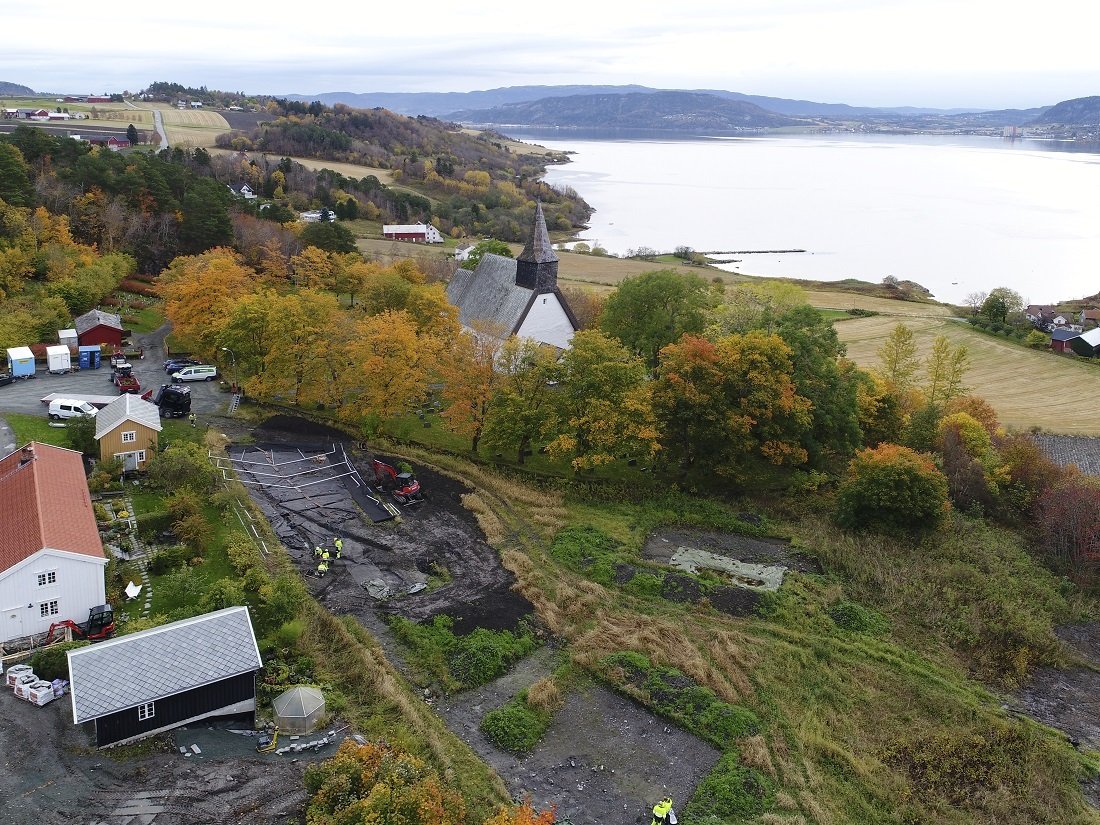
Erecting tents at the excavation site with Steine Church behind. Photo: Raymond Sauvage, NTNU University Museum
Construction on the Gothic-style church, inspired by English cathedrals like Westminster Abbey and Canterbury and Lincoln cathedrals, began as early as 1070 and took 250 years to complete.
Archaeologists uncovered a church mason’s mark that corresponds to one found on Nidaros Cathedral. These marks were personal to every individual stonemason, which means that the same stonemason worked on both buildings.
At first, the site was chosen for sampling of layers containing brewing stones, later, the dig was expanded, and now objects have been found that date back to 700 CE (the late Germanic Iron or Merovingian Age.)
AncientPages.com
Expand for referencesReferences:
NTNU University Museum


